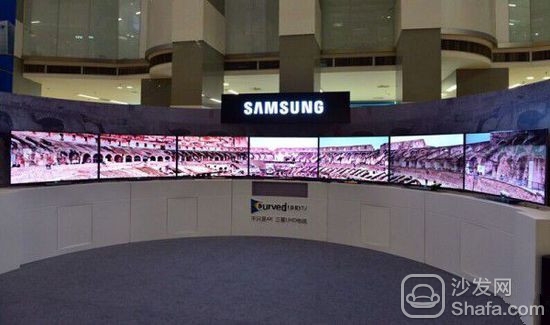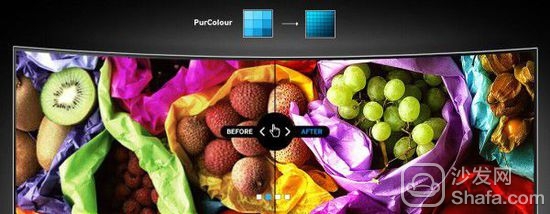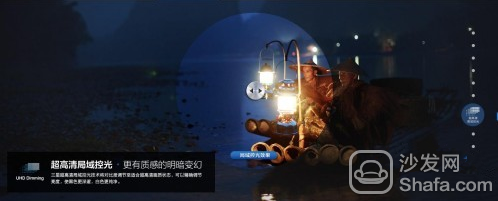Ultra HD is undoubtedly one of the most important technologies in the television industry in recent years. Both international brands and domestic manufacturers are vigorously promoting their own ultra-high definition television products. According to the survey data of the Consumer Electronics Product Survey Office of the China Electronic Chamber of Commerce, In 2014, sales of 4K Ultra HD were about 8 million units, accounting for nearly 20% of the total. It is expected that in the context of further improvement of the industrial chain construction and a more mature market, the proportion of 4K TV consumption in 2015 is expected to reach 40%.
Although there are still concerns about lack of ultra-HD sources, at this year's CES 2015, Samsung, LG, Sony, Panasonic, Sharp and other international companies have formed an ultra-high-definition alliance to set the industry for future ultra-high definition products. Standards provide more possibilities for more Ultra HD sources in the future.
No matter from the technical level or the market level, ultra-high definition television is undoubtedly an important trend in the future. The major TV manufacturers have no doubt about this, but the difference is that in the ultra-high-definition technology development, some brands are also Actively open up their own Ultra HD direction.

According to DisplaySearch data, Samsung Electronics’ share in the global ultra-high-definition TV market reached 36% in the third quarter of 2014. In terms of technology, Samsung TV not only actively promotes ultra-high definition television products, but also has its own characteristics. Technology integration, which created the concept of "UHD".
In fact, judging from the development direction of hardware technology, Ultra HD is bound to be the future trend, but only at the stage of 38402160 resolution, it cannot complete the improvement of the quality of the current image quality if it can include resolution and color. It is possible to give the user a good experience by performing all-round optimization in various aspects such as the presentation of picture details.

The ultra-high-definition resolution section needless to say, 38402160 resolution is a hard indicator of ultra-high-definition television, in addition, the color of the screen is also very important. For this, Samsung's curved UHD TVs have adopted their own unique technology - Ultra-high-definition local light control technology, ultra-high-definition high-definition picture quality technology, these two technologies can be automatically optimized for image color, color saturation, etc. Increase the contrast and color saturation of the image, make black more dense, white more pure, more vivid colors also make the image more realistic and natural.

In the details of performance, in order to still allow users to experience the shocking feeling of ultra-high-definition picture in the absence of ultra-high-definition film source, Samsung curved UHD TV also uses 4K sharp core image engine and Up-scaling picture quality enhancement. Technology can improve the picture quality of ordinary non-ultra-high-definition pictures to near-Ultra-definition level, and solves the problem of the source of watching UHDTVs in advance.

We have seen that in the future development of ultra high-definition television, only the increase in resolution can no longer satisfy the television companies like Samsung. The pursuit of color performance and the optimization of the overall picture quality have become more and more. The company’s technological development goals also provide new options for the overall technology of TV development in the future.

On-Grid Inverter converts DC power to AC power for feeding back to the grid. The frequency of the output voltage of the grid-connected inverter needs to be the same as the grid frequency (50 or 60Hz), which is generally achieved by the oscillator in the machine, and the output voltage will also be limited not to exceed the grid voltage. Modern high-quality grid-connected inverters can have an output power factor of 1, which means that the output voltage and current phases are the same, and the phase difference between them and the grid voltage is within 1 degree. There is a microprocessor in the inverter that can sense the AC waveform of the grid, and according to this waveform, generate voltage and send it back to the grid. However, the electricity sent back to the grid needs to have a certain proportion of reactive power, so that the power of the nearby grid is within the allowable limit. noon) its voltage may rise too high.
If the power of the grid is cut off, the grid-connected inverter needs to be disconnected from the grid quickly. This is a regulation of the National Electrical Code (NEC) in the United States to ensure that when the grid is out of power, the grid-connected inverter will not provide power to the grid, and at this time the workers who maintain the grid will not be electrocuted.
Properly configured, grid-tie inverters allow a home to use alternative energy sources that it generates itself (such as solar or wind power) without cumbersome wiring and without the need for batteries. If there is insufficient alternative energy, the insufficient part will still be provided by electricity from the grid.
Grid-connected inverters are widely used in household photovoltaic power generation systems, commercial and industrial photovoltaic power plants and other scenarios. By connecting to the grid, they help to achieve efficient use of renewable energy and reduce carbon emissions, promoting sustainable development and popularization of clean energy.
on grid solar inverter, micro inverter on grid, 25 kw on grid inverter, on grid power inverter, 15kw on grid inverter
Ningbo Autrends International Trade Co., Ltd. , https://www.china-energystorage.com
